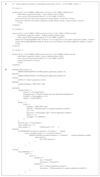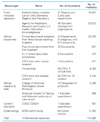Establishing semantic interoperability in the course of clinical document exchange using international standard for metadata registry
Article information
Abstract
Around the world electronic health records data are being shared and exchanged between two different systems for direct patient care, as well as for research, reimbursement, quality assurance, epidemiology, public health, and policy development. It is important to communicate the semantic meaning of the clinical data when exchanging electronic health records data. In order to achieve semantic interoperability of clinical data, it is important not only to specify clinical entries and documents and the structure of data in electronic health records, but also to use clinical terminology to describe clinical data. There are three types of clinical terminology: interface terminology to support a user-friendly structured data entry; reference terminology to store, retrieve, and analyze clinical data; and classification to aggregate clinical data for secondary use. In order to use electronic health records data in an efficient way, healthcare providers first need to record clinical content using a systematic and controlled interface terminology, then clinical content needs to be stored with reference terminology in a clinical data repository or data warehouse, and finally, the clinical content can be converted into a classification for reimbursement and statistical reporting. For electronic health records data collected at the point of care to be used for secondary purposes, it is necessary to map reference terminology with interface terminology and classification. It is necessary to adopt clinical terminology in electronic health records systems to ensure a high level of semantic interoperability.
Acknowledgement
This research was supported by the basic science research program through the National Research Foundation of Korea funded by the Ministry of Education, Science and Technology (2010-0028631). YRP's education grant was supported by the Ministry of Health and Welfare, Republic of Korea (A112020).









